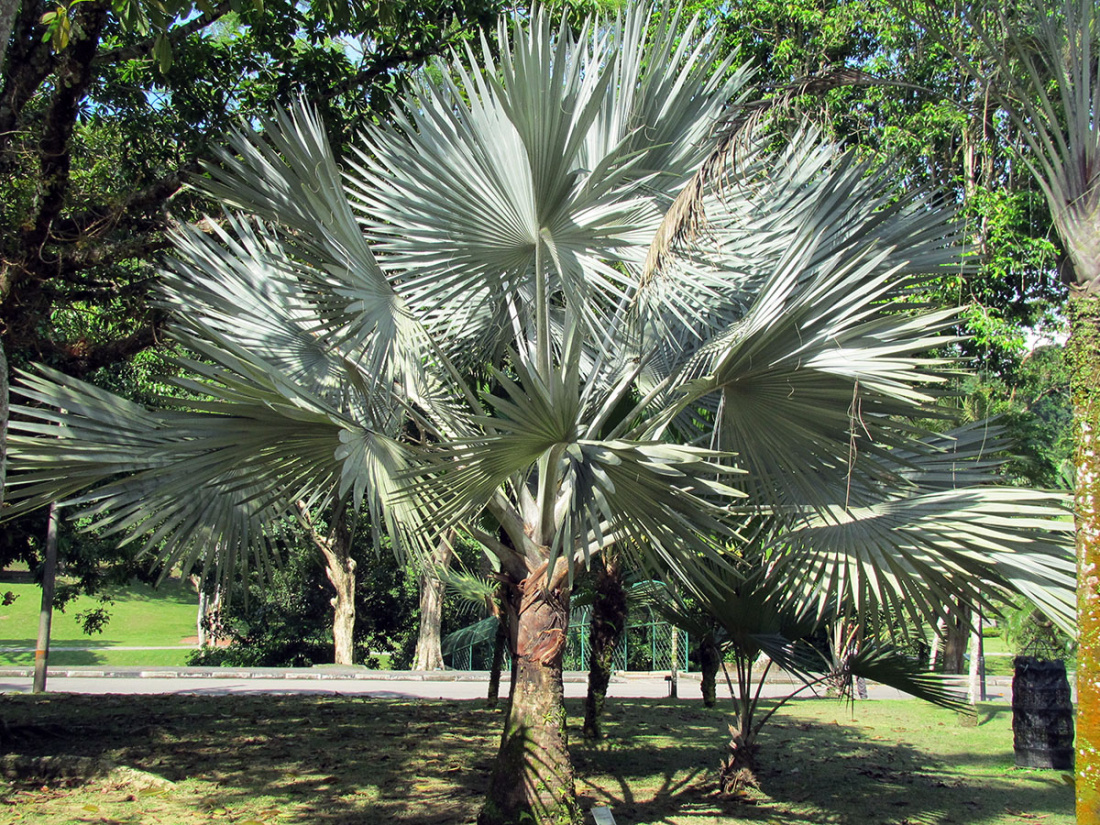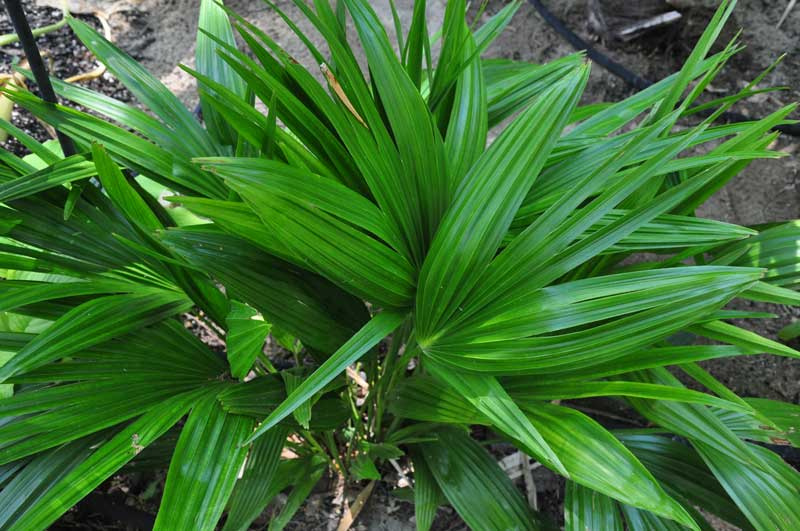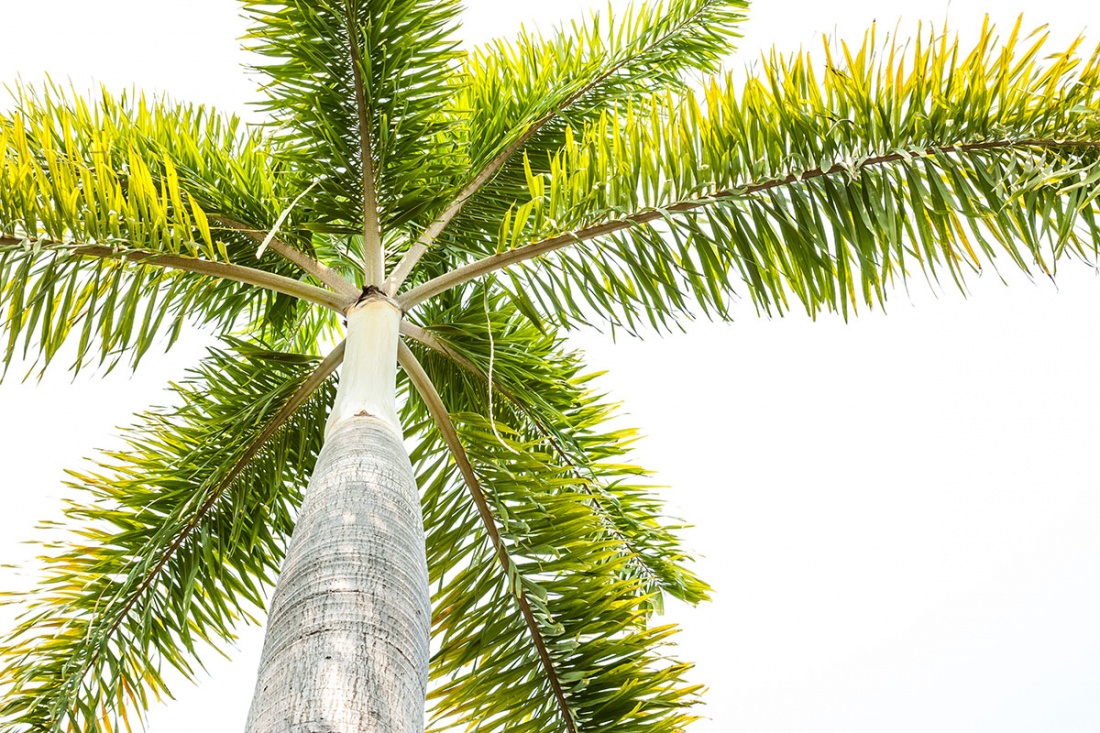Tropical islands and long stretches of Miami streets conjure visions of massive palm trees. Although these robust, large plants make decorative roadside elements, you can also grow them in your own garden. The trick to growing palms is to find out which hardiness zones they grow in. We can use the Hardiness Zones Map to determine the zones for every location around the country.
Interestingly enough, palm trees are actually more closely related to grasses, onions, lilies, and bamboos than trees, with over 2500 species of palms in the Arecaceae botanical family.
These tall trees with their eye-catching fronds make ideal outdoor plants lining walkways, providing shade for car parks and beautifying public areas. There are small palms that are under 20 feet tall, which are well suited as garden plants, and some palms grow well indoors too, like the Areca Palm, Lady Palm, and Spindle Palm. According to the hardiness zone that each type of palm tree prefers, you can learn how to grow and maintain them using the USDA Hardiness Zones Map.

The first version of the Hardiness Zones Map was created by Henry Skinner who worked at the United States National Arboretum in the 1960s. After some fine-tuning, this developed into the official USDA Hardiness Zones Map that we are now familiar with. The map had substantial changes made to it in 1990, and it was most recently updated in 2012, due to the ever-growing and changing climate database.
The Hardiness Zones Map categorizes regions by their average minimum winter temperatures and separates them further into sub-categories. This allows us to determine which palm trees will thrive in which areas, based on their specific growing requirements.
There are 13 zones, with each zone representing ten degrees that are further divided into an (a) and (b) sub-category, starting from -60 degrees in zone 1a up to 75 degrees in zone 13b.
Another map is the American Horticultural Society Plant Heat-Zones Map, which is based on the average high temperatures in the various regions. For the purposes of this article, we will use the USDA Map.

Cold Zones — Palms That Grow in Hardiness Zone One to Six
Most people assume that palm trees only grow in tropical locations, where the climate is warmer. However, there are numerous cold hardy palms that you can choose for your garden if you are located in any of the cold zone regions.
The colder regions, with temperatures below freezing, are located in the northern parts of the United States. The further north you go, the lower the Zone, with the coldest regions being in Alaska. Some cold hardy palms can even withstand a bit of snow.
- Trachycarpus Fortunei (Windmill Palm) — This is one of the most popular cold hardy palms. Also known as the Chinese Windmill Palm or Chusan Palm, the dark compact leaves should be sheltered from the wind.
- Bismarckia Nobilis (Bismarck Palm) — The steely blue, crown-shaped fronds make this palm a gorgeous addition and it can survive rare freezes, however, it does enjoy the more tropical climates.
- McCurtain Dwarf Palmetto — This variety of Dwarf Palmetto has been known to survive in zone four, and most do not experience leaf damage in zero-degree temperatures.
- Bulgaria Windmill Palm — As the name suggests, this palm trees originates from Bulgaria where it is no stranger to snowfall. It was known to survive the Polar Vortex experienced in Washington DC in 2013.
- Needle Palm — This cold-hardy palm can grow in regions up to zone 6a or 5b, so this is a great option for first-time cold palm growers. It does prefer protection from the wind and thrives with hotter summer temperatures, therefore grows better on the East Coast as opposed to the West Coast.

Mid Zones — Palms That Grow in Hardiness Zone Seven to Nine
The mid zones are more conducive to growing palms as the temperatures in zone seven to nine, range from zero to 30 degrees. Some popular palm-growing regions that fall within these zones include California, Arizona, and Florida; however, many hardy palms tolerate the colder temperatures of zone seven very well.
- Adonidia Merrillii (Christmas Palm).
- Arenga Palm (Dwarf Sugar Palm) — They prefer full sun and well-drained soil.
- Bottle Palm.
- Chamaerops Humilis (European Fan Palm) — These are mildly salt tolerant, so great for ocean-side properties.
- Pindo Palm.
- Sago Palm — Grown successfully in zone 7b going into 7a, this is the cold hardiest of the cycad family.
- Chinese Fan Palm — Also known as the Fountain Palm, these trees can be grown in zone seven or eight, but will likely die back during the coldest times of the year. They will emerge once the temperatures climb. Here are growing tips for Chinese Fan Palms.
- Dwarf Palmetto — Ideal in zones 7b to 11, this palm is tolerant of cold and drought conditions due to its trunk that extends up to five feet underground, protecting it from above ground conditions. It is even flood-resistant.

Warm Hot Zones — Palms That Grow in Hardiness Zone Ten to 13
The top end of the hardiness zones map covers the southernmost parts of Florida, as well as Hawaii and Puerto Rico, where palm trees are commonly seen.
Pachypodium lamerei (Madagascar Palm).
Thrinax Radiata (Florida Thatch Palm) — This palm prefers well-drained, sandy soils and makes an excellent hedge or barrier plant due to its slow growth rate.
Date Palms — These fruit-bearing palms encompass Phoenix Palms and some can grow Zone Eight regions. Learn how to prune date palms to ensure excellent growth.
Zombia Antillarum (Zombie Palm) — These drought-resistant palms make beautiful garden trees, but do create spines where old foliage has died back, so it is best suited for an inaccessible corner.
Wodyetia Bifurcata (Foxtail Palm) — Beautiful, long symmetrical leaves are the striking feature of this palm and it can tolerate semi-drought conditions well. It is self-cleaning, meaning that old leaves fall off and do not require pruning.
Copernica Alba (Caranday Palm) — The fan-shaped foliage and tall, hard trunk make this a popular choice. It produces a waxy substance that is used to make candles, car wax, and lipstick.
King Palm — This is a group of six palm trees all native to Australia.
The above is not an exhaustive list, but gives you an indication of the most popular palm trees that you can choose from by zone. Of course creating the most viable conditions for your palm tree, especially in the cold zones, will involve some maintenance like pruning, wrapping the tree, or creating a protective covering.
Palm trees add a tropical, beautiful element to any garden, and using the Hardiness Zones Map, you can choose the ideal palm trees for your location.


